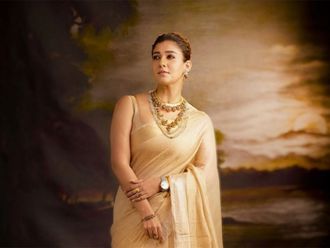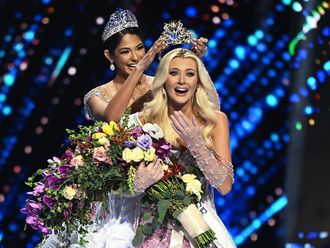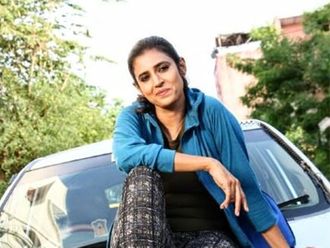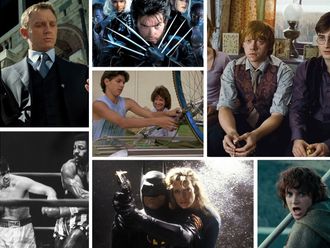By the time Mario Vargas Llosa got to Roger Casement’s grave, he was already besotted. “He was a hero, very imperfect, very human and for me this made the character sympathetic. More than sympathetic,” says the Nobel laureate at his publisher’s offices in London. “But certain people find it difficult to accept heroes who aren’t perfect.” At Glasnevin Cemetery in Dublin, Vargas Llosa found the grave for the Irish patriot hanged by the British in 1916. “It was very sad,” Vargas Llosa says, “because around him there are always flowers on the tombs of the leaders of the Irish rebellion, but on Casement’s tomb there is not one flower.”
The epigraph to Vargas Llosa’s new novel about Casement’s life, “The Dream of the Celt”, comes from the Uruguyan writer Jos Enrique Rod: “Each one of us is, successively, not one but many. And these successive personalities that emerge one from the other tend to present the strangest, most astonishing contrasts among themselves.” This is what captivated Vargas Llosa: Casement’s many astonishing contrasts. Pillar of the establishment (Casement was knighted for exposing abuses in Congo and Amazonia) who sought to blow it up; Irish rebel who tried to stop the Irish rebellion (because he thought that, without German support, the Easter Rising would fail); a man who died a martyr yet could not share his fellow revolutionaries’ quest for martyrdom.
“I think he will never be totally accepted,” Vargas Llosa says. “There will always be a reluctance to accept this complexity, which is the complexity of human nature. We are not perfect, and that is not tolerable in our heroes.”
Casement is ideal material for Vargas Llosa, not least because there are many parallels between the neglected Irishman and the feted Peruvian. Like his protagonist, Vargas Llosa is a globetrotting man of adventure, easily multilingual, a teller of truth to power in his homeland, a writer unafraid to excoriate political leaders abroad. Like Casement, he is a tangle of paradoxes. When we meet, he is preposterously suave — sporting blazer, carefully parted hair and easy charm — and yet this is also the guy who punched out Gabriel Garcia Marquez, his rival for the title of Latin America’s greatest writer. Like Casement, he turned to politics in middle age with disastrous consequences (he still winces when I mention his 1990 candidacy in Peru’s presidential elections); unlike Casement, he has lived to regret that misstep.
“Am I becoming a fanatic?” Vargas Llosa has him asking himself at one point. Casement remains part stranger to himself. No previous Vargas Llosa protagonist — be they monomaniacal millenarian cultist, deluded dictator or Utopian artist — had such a complex personality, nor could they be both enigmatic and loveable. For all failings of “The Dream of the Celt” (leaden dialogue, repetitiveness, flat description rather than successful dramatising of the story’s most potent moments), it has the most compelling hero of Vargas Llosa’s oeuvre.
The unknowability of Casement attracted Vargas Llosa too. “It’s not a bad thing that a climate of uncertainty hangs over Roger Casement as proof that it is impossible to know definitively another human being, a totality that always slips through the theoretical and rational nets that try to capture it,” he writes in the novel’s epilogue.
Vargas Llosa’s abiding conviction in the many fictions he has written about real historical figures is that there are other nets. “I have taken many liberties,” he laughs. “In fiction you are not limited by facts. You can manipulate reality, your can invent without being disloyal to the essence of history. I think we probably have a much more accurate picture of what was happening in the Napoleonic wars in Russia from Tolstoy than reading the historians.”
When Vargas Llosa was awarded the 2010 Nobel Prize for Literature, the Swedish Academy praised his “cartography of structures of power and his trenchant images of the individual’s resistance, revolt and defeat”. That assessment could still apply to “The Dream of the Celt” as it applied also to his epic 1984 novel of a millenarian cult, “The War of the End of the World”. Based on events in Bahia, Brazil, in the late 19th century, the novel focused on a charismatic preacher, Antonio Conselheiro, who exhorts followers to build a new city in defiance of a national government that decides to destroy him and his Utopia. Vargas Llosa has often been drawn to such fanatical historical figures at odds with society. In “The Way to Paradise” (2003), for instance, he became besotted with the painter Paul Gauguin. “Gauguin thought that great art needed barbarous people,” he says, “that too much civilisation was the end of great art — Black art was discovered after Gauguin, and because of him. Gauguin was the first who had the idea to go to the primitive cultures, because the power of creativity is there, rational civilisation has completely destroyed the creative spirit.
"Casement was practically the same. He was saying: ‘These people are not barbarous. We are doing criminal things against them because they are poor and not so strong as we are.’ That was really a revolutionary idea at the time.”
Vargas Llosa came to Casement not through the Peruvian connection, but through reading a biography of Joseph Conrad. “Conrad had a very naive idea that colonisation was bringing modernity, Christianity and commerce to this barbarous people. Casement was instrumental in giving Conrad a much more realistic idea of what was going on. They became quite close friends. There is a letter in which Conrad says to Casement, ‘Without you I would never have written ‘Heart of Darkness’.’ So I became very curious and thought, who was this Casement, you know? I started to investigate.”
Some critics have found Vargas Llosa’s novel overburdened with the fruits of this three-year investigation, but when he first achieved literary success, it was through plundering not other people’s biographies for material, but his own. In 1963, at 27, he won the Premio Biblioteca Breve and the Premio de la Crtica Espanola for his debut novel “La ciudad y los perros” (published in English as “The Time of the Hero”), set among cadets at a Peruvian military school and drawing on his experiences at Lima’s Leoncio Prado Military Academy, to which his father sent him when he was 14.
So stinging was his portrayal of the school’s macho, bullying ethos that several Peruvian generals charged the book with being the product of a “degenerate mind”, who had been paid by Ecuador to undermine the army’s prestige. A thousand copies of the book were burnt at the academy.
By then, Vargas Llosa had already worked as a crime reporter, studied in Lima and Madrid, and made the fruitful decision to abandon paid journalism in favour of struggling to write fiction. “I decided I’m going to try to be a writer and consecrate my time and my energies to writing. I would survive doing marginal jobs. That was a very important moment in my life,” he told an interviewer. He was also married to a relative ten years his senior. He had eloped when he was 19 with his maternal uncle’s sister-in-law Julia Urquidi in 1955. Their eight-year marriage supplied the material for his most famous novel, “Aunt Julia and the Scriptwriter” (1977), a comic fiction about a student and aspiring writer who falls in love with his uncle’s sister-in-law and befriends a manic Bolivian soap opera writer. He dedicated the book "To Julia Urquidi Illanes to whom this novel and I owe so much". Urquidi later gave a rather different account of the relationship in her memoir, “Lo que Varguitas no dijo” (“What Little Vargas Didn’t Say”).
William Boyd, who adapted the book for cinema, wrote: “Vargas Llosa has continually celebrated the amatory electricity between men and women — that ticking clock that animates almost all of us, whether to delightful or disastrous effect, or both.”
He had deep admiration for the literary techniques of Sartre, Flaubert and Faulkner. So was he never a social realist writer? “No, because social realism tries to compete with sociology and history. I think literature should be freer than that in describing the real world and real experience. I don’t think you can eliminate the imaginary dimension in the real world that plays an important part in history, and I think that through literature you can reach this imaginary dimension that plays such an important part in the character of a historical period better than any other way.”
With books such as “Conversation in the Cathedral” (1969) and “Captain Pantoja and the Special Service” (1973), Vargas Llosa joined that peculiar literary movement of the 1960s and early 1970s, the Latin American Boom. It included Gabriel Garcia Marquez, Carlos Fuentes, Julio Cortzar — all united by a commitment to experiment in fiction and a political commitment rarer among their contemporaries in Europe or the United States. But such unities could be overstated: In reality, if the movement’s multifarious members, which included older writers such as Pablo Neruda and Jorge Luis Borges, shared anything in common, it was chiefly the boost they received to their books’ sales, thanks to publication in Europe and the US during the 1960s.
In 1990, Vargas Llosa sought to express his political commitment in something other than fiction. He ran for the Peruvian presidency with the centre-right Frente Democrtico coalition, advocating neoliberal reforms, or that dismal neologism “Andean Thatcherism”. He lost the election to Alberto Fujimori, a Peruvian of Japanese descent who capitalised on fears among the poor of Vargas Llosa’s proposed austerity measures. The novelist’s opponents used to read out the more sexually candid passages of his novels to shock potential voters into opposing him. But whence the Thatcherite drift of a man who had been an enthusiast for Fidel Castro in his youth? Salman Rushdie detected it as early as 1984 in the novel “The Real Life of Alejandro Mayta” (1984), deeming the book Vargas Llosa’s “first overtly right-wing tract”, but in truth he had drifted rightwards long before then: In 1971 he broke with his earlier enthusiasm for the Cuban revolution and mocked Marquez as “Castro’s courtesan”.
After the presidential rout, Vargas Llosa licked his wounds in public print. The whodunnit “Death in the Andes” (1993), set in Peru during the Shining Path’s Maoist insurgency and counter-insurgency of the 1980s and the 1990s, howled with frustration at the indigenous people of his homeland, many of whom hadn’t voted for him. A memoir in the same year, “A Fish In the Water”, included what one reviewer termed an “epic whinge” about his failed presidential campaign. More sophisticated was “The Feast of the Goat” (2000), a novel about the 1930-1961 dictatorship of Rafael Trujillo in the Dominican Republic, in which the dictator’s assassination and the lingering aftermath of his rule was imagined. Critics detected parallels in his treatment of Trujillo with his nemesis Fujimori, the strongman or caudillo who owes his power to duping his subjects.
The Times Literary Supplement reviewer argued that the novel “will stand out as the great emblematic novel of Latin America’s 20th century and deprives ‘One Hundred Years of Solitude’ of that title”. How Vargas Llosa must have enjoyed those words (if he read them): Although he wrote his PhD on Marquez, he later punched him in the face in 1976 in Mexico City for reasons that have never been made clear. Possibly, the dispute had something to do with something Marquez did to Vargas Llosa’s second wife (and first cousin), Patricia, the mother of the Peruvian’s three children. In any event, the two great writers haven’t spoken for more than 30 years.
I ask Vargas Llosa if there are passages in his new novel that might parallel his own ill-suitedness for politics. That possibility occurred to me when reading of Casement’s realisation of his political ineptitude. After all, Casement was duped into love by a Norwegian working for British intelligence, and his idea for Irish revolution involved identifying with a Germany whose soldiers were trying to kill those tens of thousands of Irish soldiers still fighting for Britain. Was he similarly politically naive? “Yes. Oh, absolutely yes. I learnt from my political experiences that I am a writer, not a politician. Part of the reasons I have lived the life I have is because I wanted to have an adventurous life. But my best adventures are more literary than political.”
Would he recommend winning the Nobel prize as an adventure to a writer? Vargas Llosa laughs: “The Nobel prize is a fairytale for a week and a nightmare for a year. You can’t imagine the pressure to give interviews, to go to book fairs. The first year was very difficult. I could barely write.” Now, though, he is writing again. After his Irish adventure the cosmopolitan, easily multilingual writer who lives both in Lima and Madrid, and has also lived in Paris and London, is returning home in fiction, setting his new book in modern Peru.
One last question. Was his dispute with Marquez about Patricia or Castro? The 76-year-old novelist affects not to have heard and heads off to have his picture taken. As Vargas Llosa writes in his latest book, it is impossible to know definitively another human being and, it might be added, still less possible to know why one future Nobel laureate punched another.
–Guardian News and Media Limited








